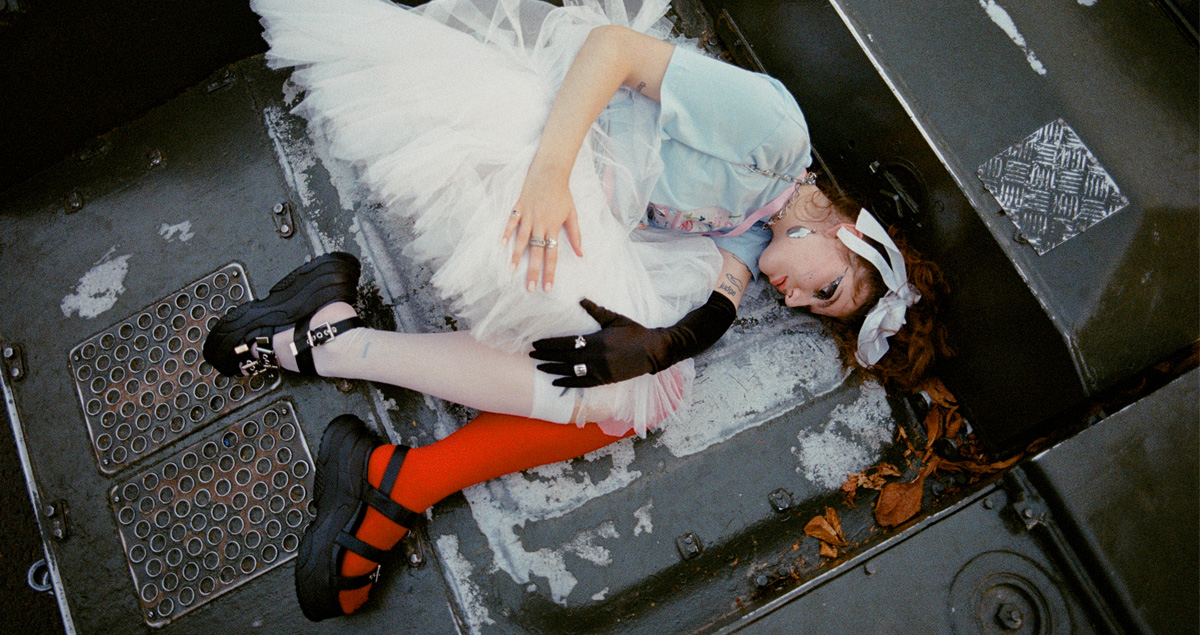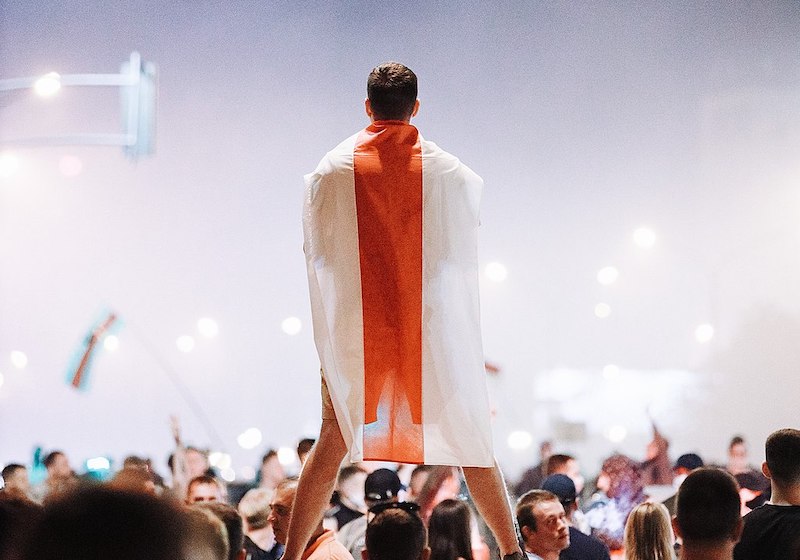Russian action art is prolific. But is it time to stop treating self-harm as art?

A scrotum nailed to cobblestones. Lips sewn shut. Putting a gun to your own head and pulling the trigger. Russian action art has never been for the faint hearted. Over the last decade, the limits to certain kinds of performance seem to be pushed ever further out, meaning that it’s also become increasingly harmful to the artists involved, as they jeopardise their own safety to rally against political repression. Following an incident last week that caused many to think they were witnessing an artist take his own life in a “performance”, it’s time to ask: how far is too far?
Pyotr Pavlensky first began capturing global headlines for a new wave of radical Russian performance art back in the early 2010s: cutting off part of his own ear (to protest the use of forced psychiatry), placing his naked body in a coil of barbed wire, sewing shut his mouth, and perhaps most infamously, nailing his scrotum to Red Square (a “metaphor for the apathy, political indifference and fatalism of modern Russian society”.)
“Whatever you say or write about these actions, a chopped-off earlobe remains a chopped-off earlobe”
“The media attempts to distort things, but these are acts that are hard to distort,” he told The Calvert Journal at the time. “Whatever you say or write about these actions, a chopped-off earlobe remains a chopped-off earlobe, a scrotum nailed to a square is always a scrotum nailed to a square and a man wrapped up in barbed wire is still a man wrapped up in barbed wire. These acts define a certain political viewpoint and the message will always get through, one way another, to its intended audience.”
Pavlensky has since fled to France, where he has continued to take delight in horrifying politicians both in Paris and Moscow. (In 2020, he published sexually explicit texts from a Paris mayoral candidate running on a platform of “family values”). But more artists are taking up his mantle. Most recently, on Friday 11 June, artist Pavel Krisevich took a gun to Red Square and simulated his own suicide.
Krisevich fired a number of blanks into the air before being arrested by police. He is now facing charges of disorderly conduct, which could see him imprisoned for seven years. Nineteen-year-old Nika Samusik, who had been covering the performance for online news outlet SOTA, also faces similar charges.
It was not Krisevich’s first radical performance. He had previously crucified himself in front of the headquarters of Russia’s security services. Pages of criminal cases were used to light a fire underneath him. But his latest work was perhaps most noticeable for the short, sharp ripple of panic it sent over social media — not least because initial reports claimed that he had taken his own life by shooting himself in the head.
The reports were quickly disproved, but as someone who sat through those sickening first minutes as frantic, contradictory posts flashed across my newsfeed, the claims did not seem far-fetched. Instead, it seems increasingly inevitable that, sooner or later, an artist will accidently die in a performance taken to extremes. The likes of Serbian artist Marina Abramović have come close to death even in artworks that were not even intended to be self-harming. (Abramović unintentionally lost consciousness due to oxygen deprivation in her performance Rhythm 5, where she set her own hair and nail clippings on fire.) When the stakes are so high, then isn’t it time the cultural world stopped celebrating self-harm as art?
The idea of what art truly is has always been a complicated subject, and performance artists have always pushed boundaries. This in itself is no bad thing. Art, after all, is designed to elicit emotions — and there is little as upsetting as the visceral discomfort of seeing another put themselves through difficult or challenging experiences. Dating back to the 1960s, actionism in particular has always been defined by its use of the human body, and the movement has been prolific in Moscow since the 90s. When Pavlensky sewed shut his own mouth in support of the then-arrested Pussy Riot, he was following in the footsteps of David Wojnarowicz’s 1989 performance Silence=Death, which rallied against the US government’s refusal to tackle the Aids epidemic. When Krisevich crucified himself, he echoed Oleg Mavromati, whose performance Do Not Believe Your Eyes in April 2000 saw his assistants tie him to a cross, nail his hands to the wood, and carve “I am not the son of God” on his back with a razor. (Mavromati was later accused of spreading religious hatred and eventually emigrated to Bulgaria.)
When the stakes are so high, then isn’t it time the cultural world stopped celebrating self-harm as art?
There’s a very legitimate reason why action art is especially relevant in authoritarian regimes. When governments impose control on the masses, for an artist there is no better demonstration of power than reclaiming your body. This is particularly poignant in a country which throughout Soviet history has used art as yet another conduit to propel its doctrines, all while deciding what is and what isn’t art. Such scrutiny usually only pushes artists to test the barriers of art. It’s easy to see why artists might use their body as canvas: when hooligans gatecrash your screenings and exhibitions and every canvas is taken from you, your own body becomes the one space that is truly your own.
Besides, controversy and performance are a heady cocktail in the social media age. Self-harming performances, in particular, create urgent, click-worthy headlines for editors and readers alike. In the context of Russia, there’s a particular loop hole that art-actionists have found a way to utilise; although the country has specific laws against swearing in print or during broadcast, media outlets are far more open to sharing images of blood, injury or self-harm compared to western European outlets. If exhibitions are censored, Russian art-actionists know that shocking and self-harming performance art will appear in Russia’s news cycle.
Some will say that this alone justifies self-harming or self-mutilating actions. Desperate times call for desperate measures. After all, material things are not suffering from political oppression in the same way as Russian people themselves. Canvases are not being beaten and raped, cameras are not being imprisoned, pencils are not being tortured: at the end of the day, it is people and their bodies that are suffering.
But it is that same desperation that should force artists to think again. We are no longer in the early days of Pavlensky’s first performances: since 2012, democratic freedoms in Russia have notably declined. In recent months, Russian civilians have literally burnt themselves alive in protest, believing that they had no way out. Irina Slavina, a 47-year-old journalist, died from self-immolation outside police headquarters in the city of Nizhny Novgorod in October 2020. Before she took her own life, she wrote on Facebook: “Blame my death on the Russian Federation”. Law enforcement had raided her apartment just 24 hours earlier. Like Pavel Krisevich’s performance, her death unfolded in grainy and confused images across social media. Knowing her fate made the artist’s action especially difficult to stomach.
Art should not be limited or controlled because its content is difficult or upsetting. Indeed, when we see Russian officials stepping in to censure artists, they are often the ones taking on the role of the caring protector, either halting exhibitions in case they traumatise children, or censoring films that could “offend the feelings of religious believers”.
But we do need to protect artists themselves. That starts with thinking hard about the impact these forays into the extreme could have on those who are already on the edge. Many creators glamourise unhealthy practices as part of their work: the writer who doesn’t sleep, the designer or architect who works 60+ hour weeks. Extreme, self-harming performances are extensions of the narrative that we should sacrifice our wellbeing for art. It is a trope we must discard. Art is an act of creation. We can do it without destroying ourselves.
Artists living under authoritarian regimes today want to affect change. But the dead cannot rally against injustice. They cannot run for office. And they cannot make their voices heard. It’s time to remind ourselves, once and for all: sometimes, simply being alive is an act of resistance.


